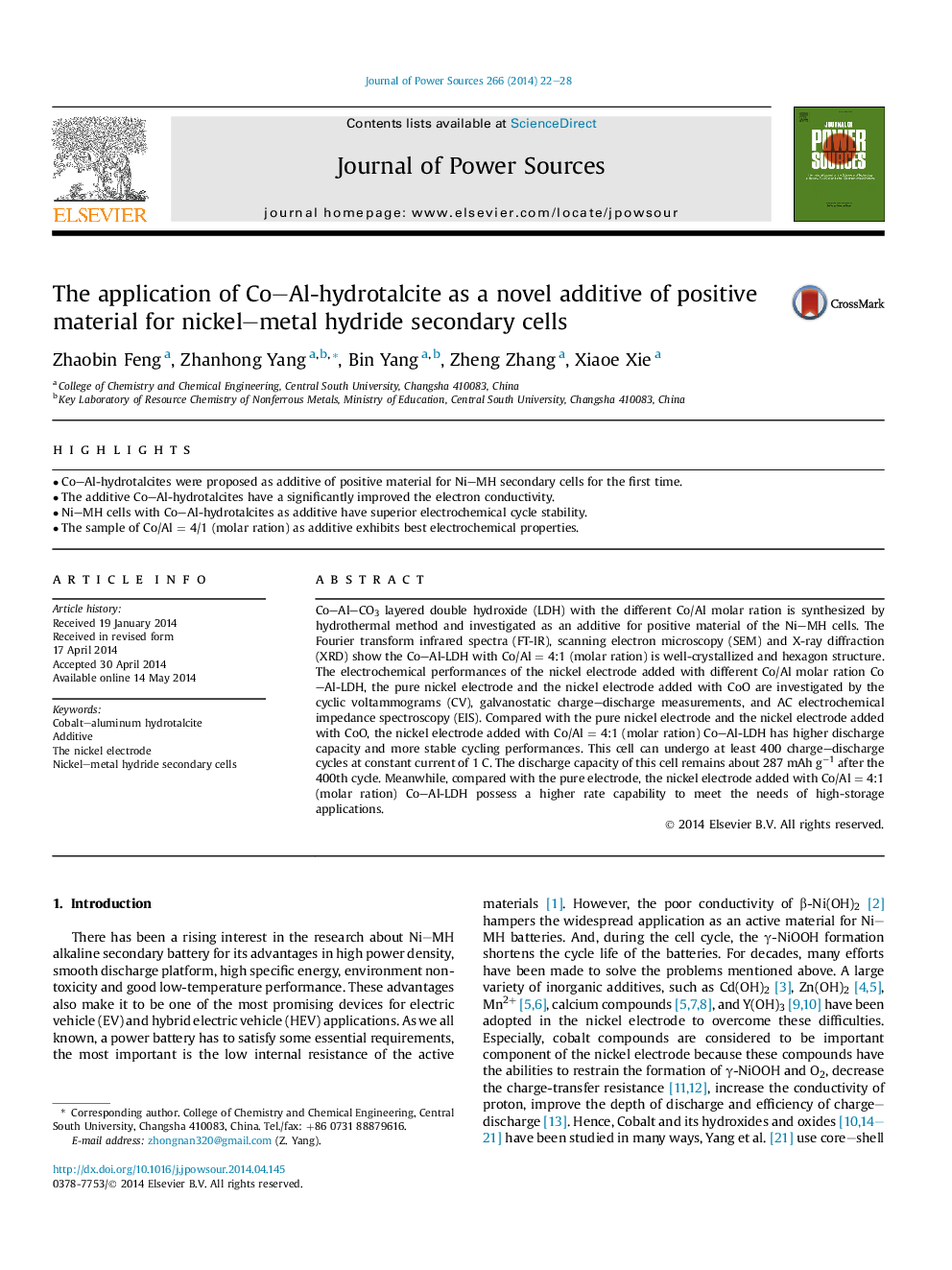| Article ID | Journal | Published Year | Pages | File Type |
|---|---|---|---|---|
| 1286768 | Journal of Power Sources | 2014 | 7 Pages |
•Co–Al-hydrotalcites were proposed as additive of positive material for Ni–MH secondary cells for the first time.•The additive Co–Al-hydrotalcites have a significantly improved the electron conductivity.•Ni–MH cells with Co–Al-hydrotalcites as additive have superior electrochemical cycle stability.•The sample of Co/Al = 4/1 (molar ration) as additive exhibits best electrochemical properties.
Co–Al–CO3 layered double hydroxide (LDH) with the different Co/Al molar ration is synthesized by hydrothermal method and investigated as an additive for positive material of the Ni–MH cells. The Fourier transform infrared spectra (FT-IR), scanning electron microscopy (SEM) and X-ray diffraction (XRD) show the Co–Al-LDH with Co/Al = 4:1 (molar ration) is well-crystallized and hexagon structure. The electrochemical performances of the nickel electrode added with different Co/Al molar ration Co–Al-LDH, the pure nickel electrode and the nickel electrode added with CoO are investigated by the cyclic voltammograms (CV), galvanostatic charge–discharge measurements, and AC electrochemical impedance spectroscopy (EIS). Compared with the pure nickel electrode and the nickel electrode added with CoO, the nickel electrode added with Co/Al = 4:1 (molar ration) Co–Al-LDH has higher discharge capacity and more stable cycling performances. This cell can undergo at least 400 charge–discharge cycles at constant current of 1 C. The discharge capacity of this cell remains about 287 mAh g−1 after the 400th cycle. Meanwhile, compared with the pure electrode, the nickel electrode added with Co/Al = 4:1 (molar ration) Co–Al-LDH possess a higher rate capability to meet the needs of high-storage applications.
